Capital:
Nicosia
Currency
Euro
Best time to visit:
The best time to visit Cyprus is from Easter to mid-June and from late August to mid-October when the weather is mild. In July and August you have to deal with crowded beaches and crowded archaeological sites.
In a word:
Kalimera (good morning)
Vaccines
None
Warnings:
- Avoid long walks: the sun is strong and many paths are steep and stony.
- Protect children from the sun with suitable clothing and making sure they are always well hydrated.
At the table:
In Cyprus all the diners share the various dishes brought to the table, not only the mezedhes (appetizers), but these in particular give the opportunity to taste many things in a fun way. Sauces, feta, salads and grilled sardines are very popular with visitors. Essentially Greek cuisine, ultimately.
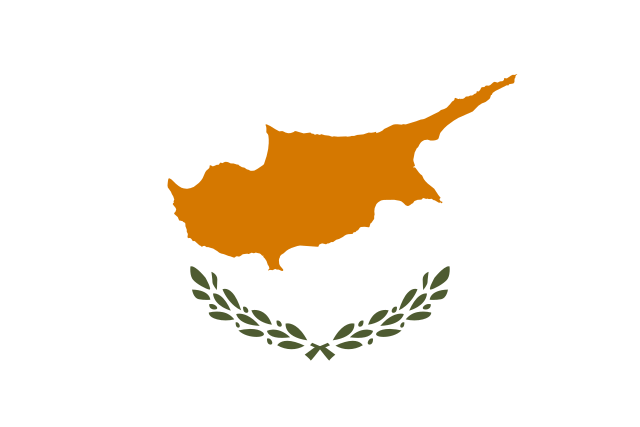
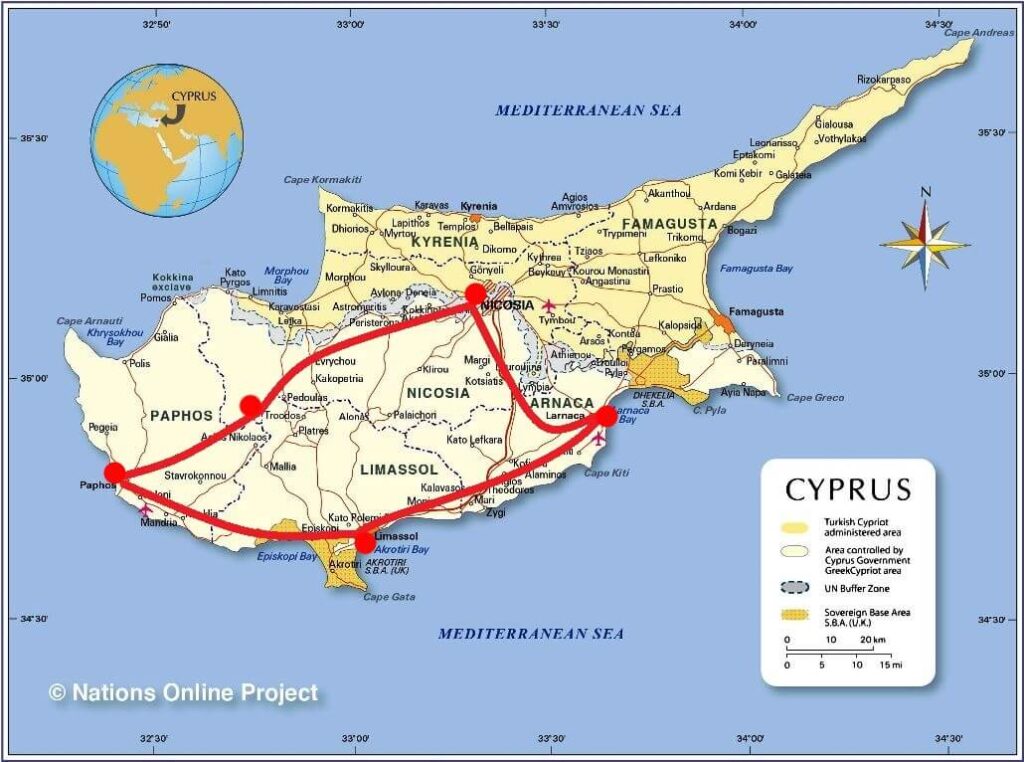
Essential experiences:
Admire a sunset while strolling along Larnaca's delightful seafront; Enjoy a glass of good red wine in Omodos, in the Troodoos Mountains; Relax by the sea for a few days but have fun in the evening in lively Paphos
Cyprus is the island of Aphrodite, the goddess of love and beauty, born from the waters of the Paphos coast. Here legend, history and culture come together making a visit to the third largest island in the Mediterranean unique.
Ancient Greeks and rich Romans, saints in search of refuge and Crusader knights in search of fortune, Venetian merchants and ruthless Janissaries: that of Cyprus is a story that becomes an encounter (sometimes a clash) between different cultures. Even today the island is divided in two, on one side the flag of Turkey, on the other the Greek flag, which flies in unison with the proud silhouette of the island that adorns the flag of the Republic of Cyprus.
Its history is quite complex due to the different dominations over the centuries, a little due to its geographical proximity to the countries of the eastern Mediterranean. The Turkish invasion of 1974 is only the latest chapter in such a troubled history that, however, at the same time, it contributes significantly to the tourist appeal of the area.
It is probably this meeting of cultures stratified over the centuries that makes the island of Cyprus so interesting, together with its beautiful landscapes and a climate that welcomes tourists from May to October.
Cyprus is a complete and welcoming destination for tourists.
We shot it in total autonomy using local buses and minivans and booking the various accommodations from time to time!
Recommended destination for both adventure travel lovers and families given the short distances of the most important places, the excellent cuisine, the wide choice of activities to experience!
In this story we will focus only on the Greek part, referring our adventure in theTurkish area of the island!
Our suggested itinerary (10 days) | |
two days: | Larnaca |
two days: | Limassol (visit of the Byzantine Castle) |
four days: | Paphos (relaxation by the sea, visit to the Tombs of the Kings), excursion to the Troodos mountains, visit to Omodos village to taste the fine wine |
two days: | Nicosia, possibility to continue the journey by visiting the Turkish part of the island |
In Cyprus, Greek is spoken, the euro is used, driving is on the left.
We land in Larnaca: first airport, second port and third city of the island by number of inhabitants, Larnaka (in Italian, Cizio) looks like a modern seaside resort where the days pass lazily between a coffee in the morning, a long stop in beach and a beer in the evening. All concentrated on the extensive promenade of Finikoudes, the engine of the local tourist economy.
It is a city founded more than 6000 years ago, a melting pot of peoples and cultures that have left different traces in local architecture and traditions.
This small town is rich in history that dates back to the time of Jesus ... the famous Lazarus ("get up and walk") after his resurrection seems to have taken refuge right here to become even Bishop of Kytion ... in addition to the famous Greek philosopher Zeno , founder of the Stoic school of thought, which was born in the surrounding area.
The day is sunny, groups of British and Russians are sprawled out in the sun, some daredevils even jump into the water, still too cold for us ...
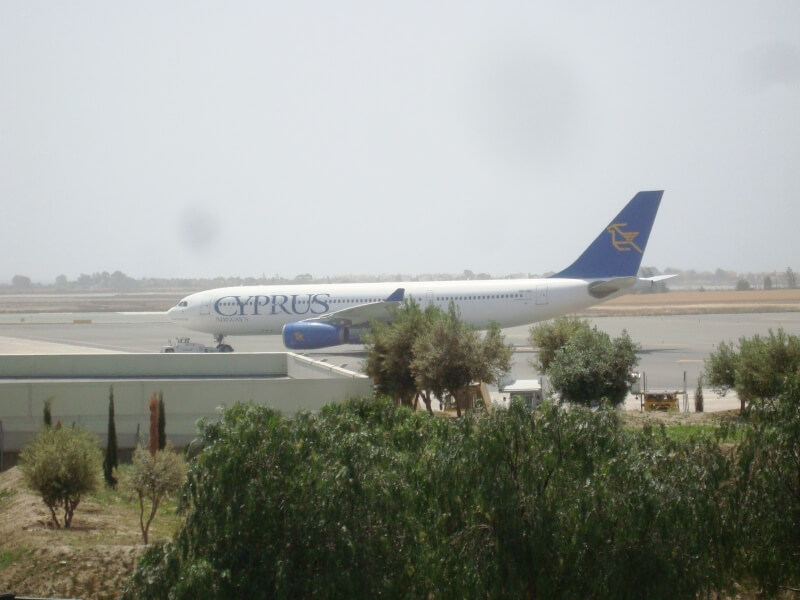
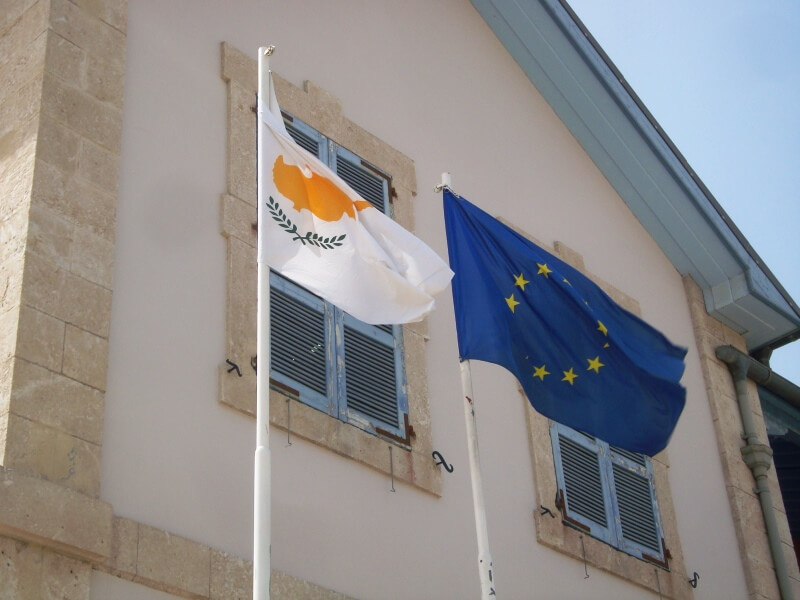
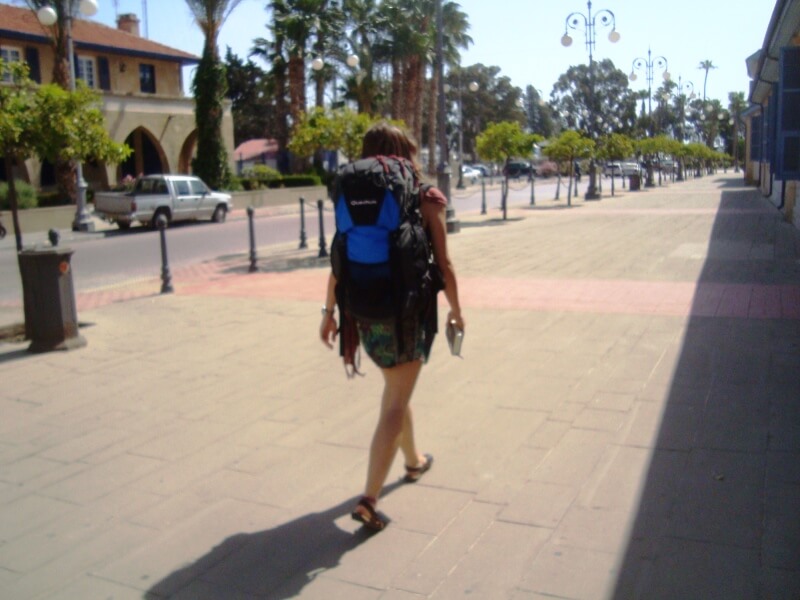
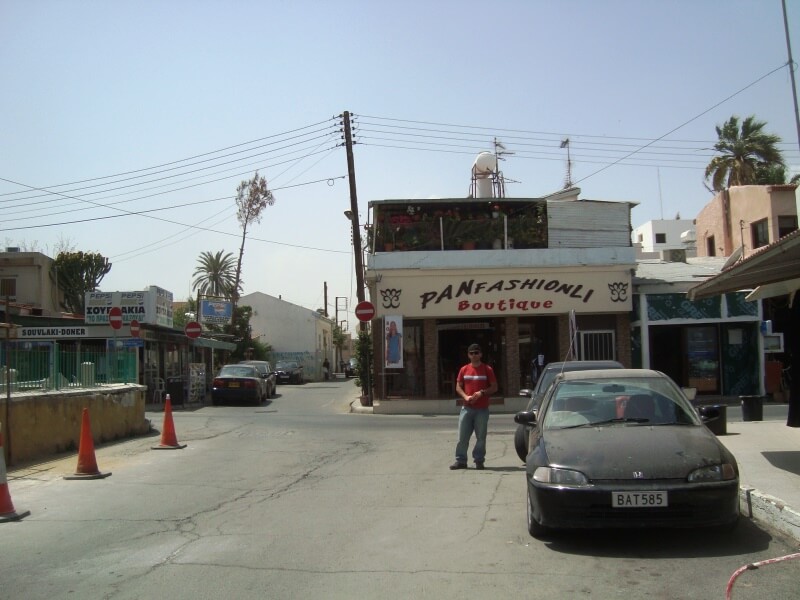
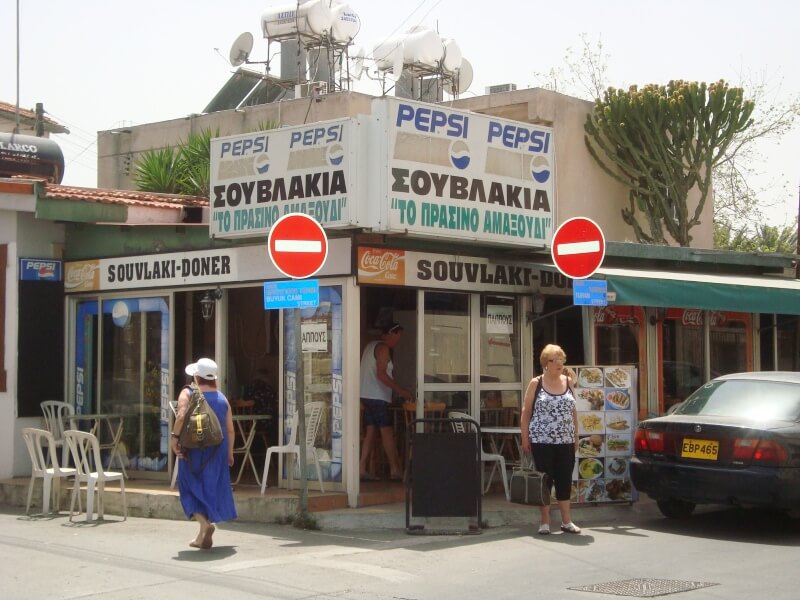
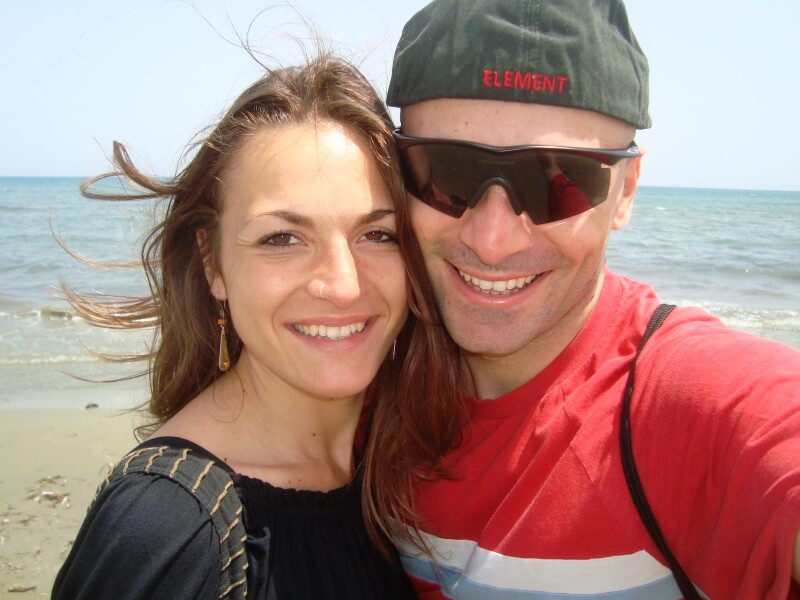
The city hinterland is a treasure trove of cultural assets of great value. Starting from the Church of San Lazzaro (Agios Lazaros), continuing through the ancient Turkish quarter of Skala, up to the small city fort.
Also worth seeing nearby is the Salt Lake, an ideal place for birdwatchers, especially during the spring months.
Please note that the Kataklysmos Festival takes place in Larnaca in June. This review comes 50 days after Orthodox Easter and comes to life from a central event in the biblical story: the Great Flood.
Over the years, the celebrations have changed considerably on the traditional religious re-enactment, but still consistent with the "theme of water": windsurfing, kayaking and swimming competitions which, together with the usual stalls on the waterfront, act as an excellent tourist attraction.
Early in the morning we take the bus to Limassol. The landscape is a succession of gentle hills, old olive groves and vineyards, the area is particularly generous for wine.
The second largest city on the island, it is also the main port of the country, the capital of the Cypriot wine industry and an important tourist destination. It is located on the south coast of the island, overlooking Akrotiri Bay. It is known for the medieval castle that dominates the historic center where the wedding between Richard the Lionheart and Berengaria of Navarre was celebrated but it is famous above all for the elegant restaurants in the center and for the clubs that crowd the port area.
Limassol is a very popular destination for seaside tourism and summer holidays thanks to its wide beaches and its numerous accommodation facilities.
We stay in an old guesthouse found almost by chance on the internet.
It is located right in the city center along Ayou Andreou Street, a very busy street with tourists!
The interior is a real museum. Even the smell seems to be that of a place from another time. There is a wall full of books, novels, some Lonely Planet of faraway places, old photos and furniture from another century! The cool thing is that we have a balcony overlooking the main street!
While sipping a relaxing coconut juice, we enjoy the last rays of the sun of another unforgettable day.
Today we move to the extreme western tip, in the tourist Paphos.
The route is very characteristic because we travel along a beautiful stretch of coast and from the windows of our small bus we admire breathtaking landscapes: a blue-white sea that has nothing to envy to the Maldives or Sardinia!
Paphos is one of the main tourist destinations in Cyprus. Even more so after the appointment, in 2017, as European Capital of Culture together with the Danish city of Aarhus. A designation that has internationalized tourist flows, alongside the more traditional Russian and British presence.
Cypriots consider Paphos the city of those who love art, history and culture, thanks to the testimonies left by ancient Greeks and Romans.
The town has an enchanting marina, with its numerous fish restaurants, the Medieval Fort and above all its extraordinary archaeological sites.
We recommend visiting the Archaeological Park of Kato Paphos, corresponding to the ancient city of Nea Pafos.
Here, discover the remains of four sumptuous Roman villas, known as the House of Dionysus, the House of Orpheus, the House of Aion and the House of Theseus. These archaeological remains have become famous above all for its spectacular and well preserved mosaics. They portray mythological characters and floral motifs.
Here there are many tourist villages and vacationers with the “all inclusive” bracelet on display. We opt for an apartment booked on the internet, excellent choice!
Paphos is an excellent option for a few days of relaxation. Here we recommend setting aside an afternoon to visit the Tombs of the Kings.
A necropolis with monumental underground tombs, a sumptuousness that can be traced back to the belief, borrowed from Egyptian culture, that the size of the burials should reflect that of the living quarters.
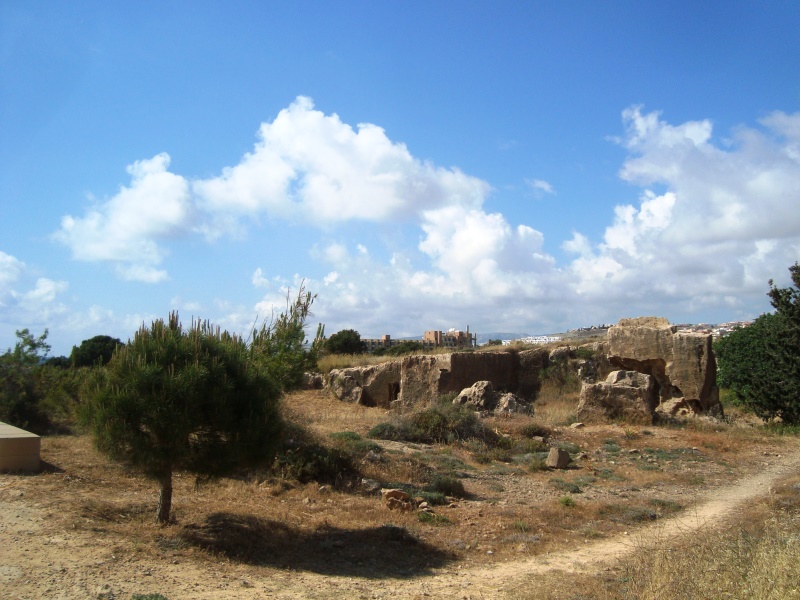
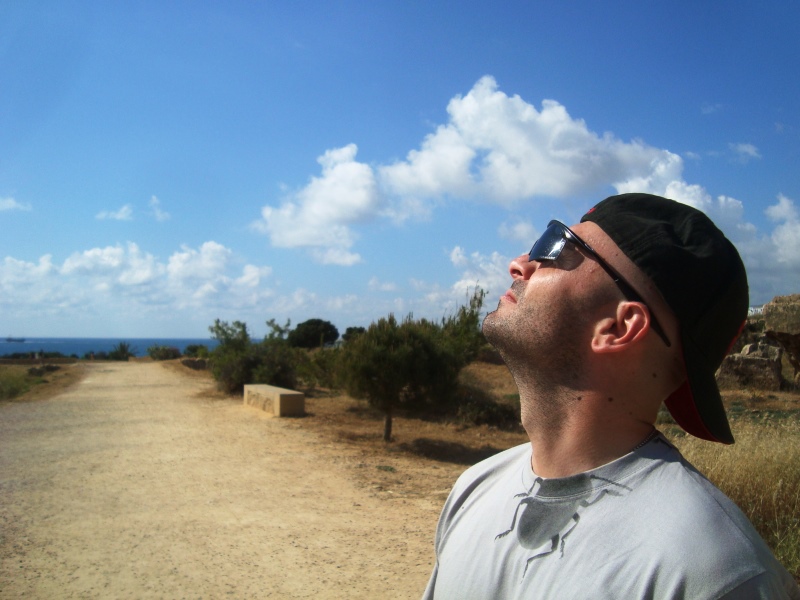
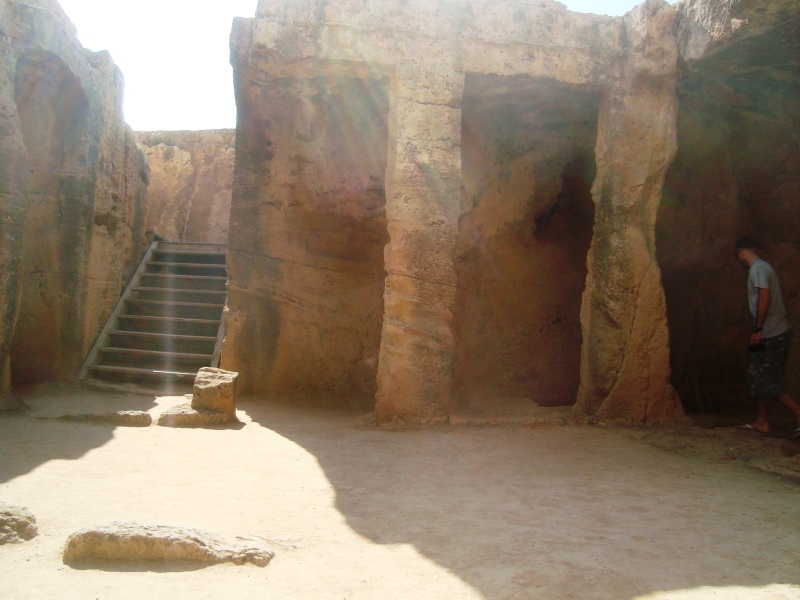
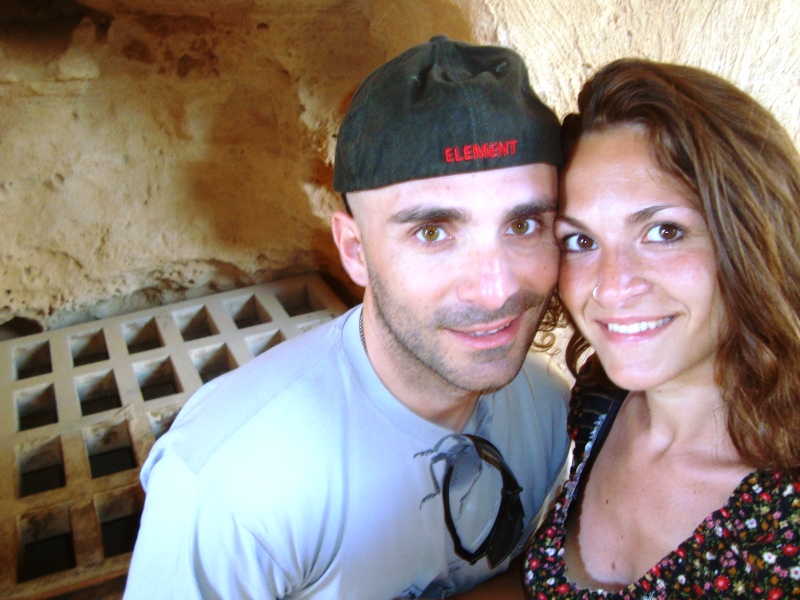
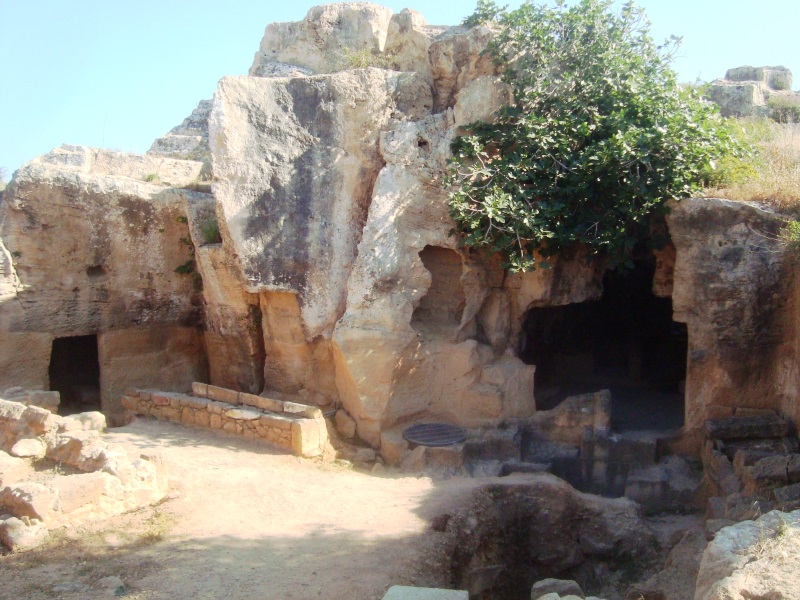
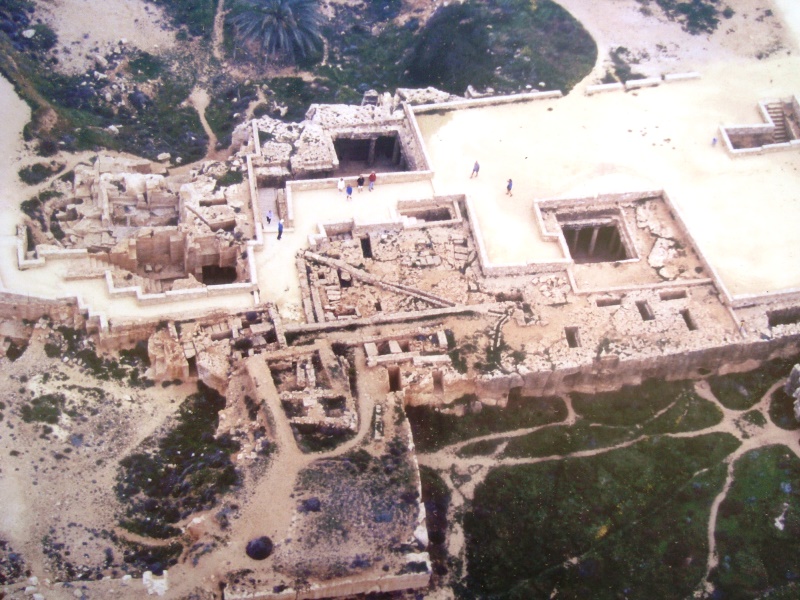
From Paphos you have to make a day trip to the Troodos mountains.
The journey is quite long and tiring ... the thousand curves that rise up to almost 1000 meters put a strain on our stomach ...
Monks, outlaws, political activists, bored rich people and, in more recent times, skiers and hikers: the Troodos Mountains have always welcomed very different subjects in search of refuge, protection, asceticism or, more simply, a little cool. and contact with nature.
Near Mount Olympus, the highest peak of the mountain range (1952 m.s.l.m.), there is a well-equipped visitor center from which to draw maps and information on the available routes (path of Artemis, path of Persephone, Atalante, Caledonia, etc.) It is not over, because in addition to outdoor activities, the Troodos Mountains preserve some of the most significant testimonies of Byzantine and post-Byzantine art. There are 10 religious buildings (nine churches and a monastery) in which the contrast between the simple forms of Cypriot rural architecture and the rich interior decorations that cover a time span ranging from 1100 to 1400 stands out. Not surprisingly, these churches (Agios Nikolaos tis Stegis, Panagia Phorviotissa, Panagia tou Arakou, Agios Ionannis Lambadhistis etc.) have long been declared a UNESCO World Heritage Site.
We stop for a while in the village of Omodos famous for its wine and its ovens. We take the opportunity to buy some carob snacks and a bottle of rosé wine to be enjoyed tonight for dinner!
We leave soon. Now the landscape changes giving way to tall shrubs that rise towards the sky like so many green pins.
Our destination is the Monastery dedicated to Macarius III, a monk who became the "father of Cyprus" at the beginning of the 20th century.
Wandering around that colorful place of prayer was a little reminiscent of Nepalese monasteries were it not for the many mosaics with sacred images ...
Of the 450 monks from the turn of the century, only 14 remain now! The reason is explained by the fact that before the parents pushed their children to monastic life, as happened, among other things, to Macario himself when he was 13, a source of honor for the family. Today times have changed, there are other aspirations, perhaps more "earthly" and perhaps those "called by the Lord" are very few!
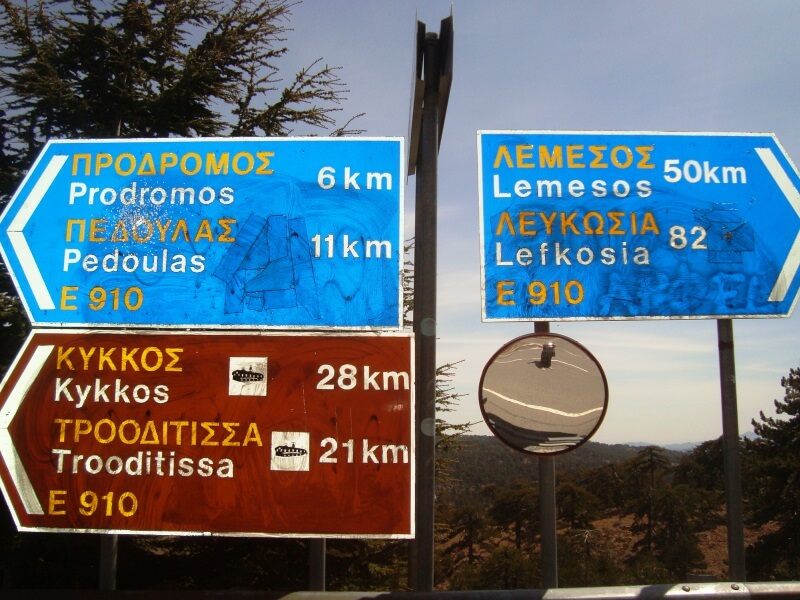
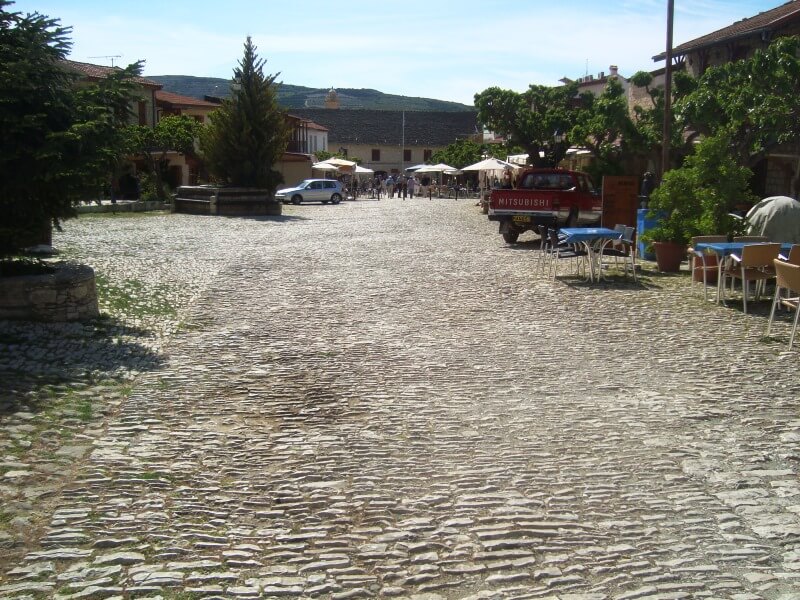
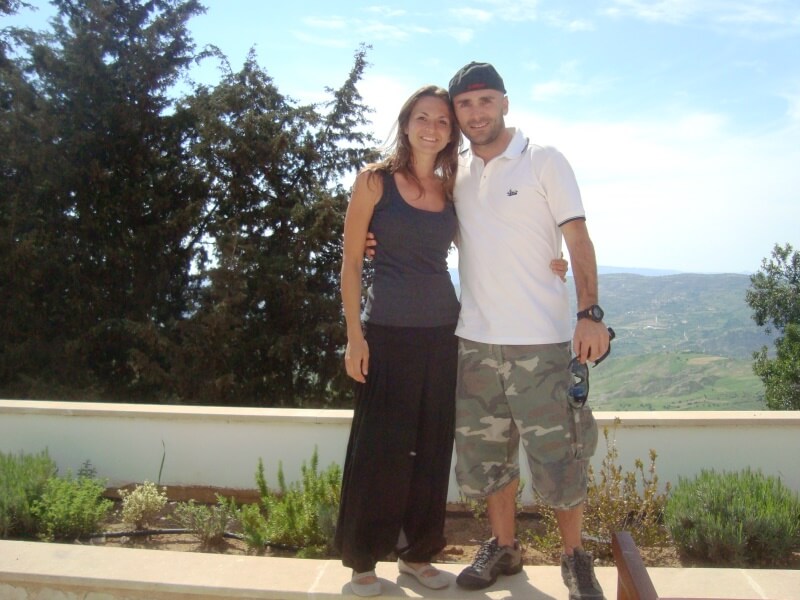
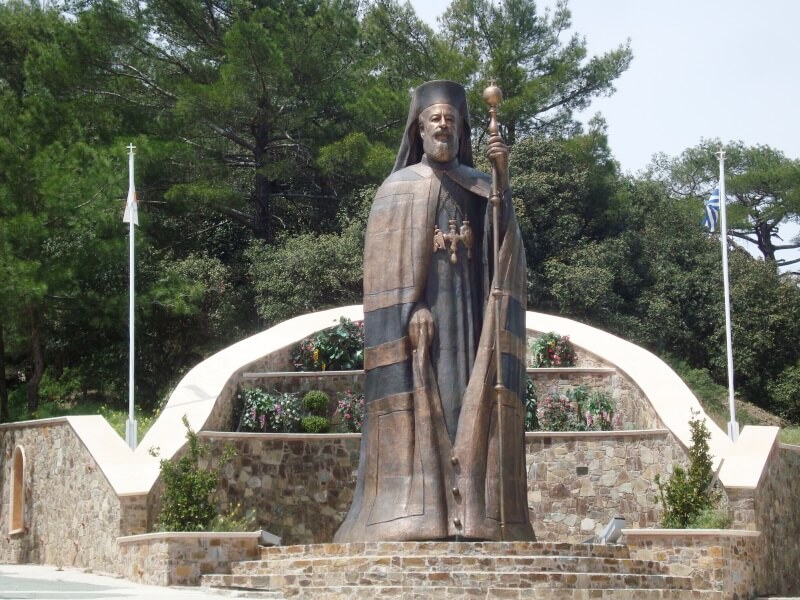
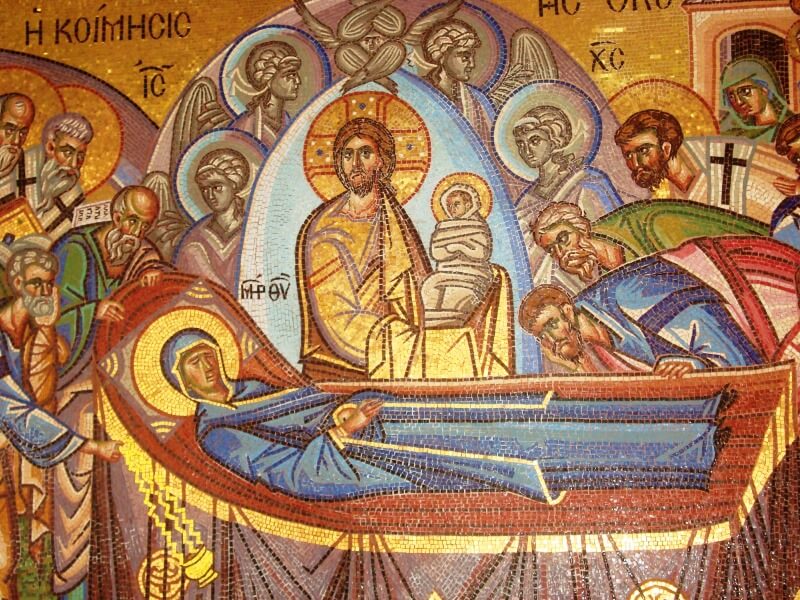
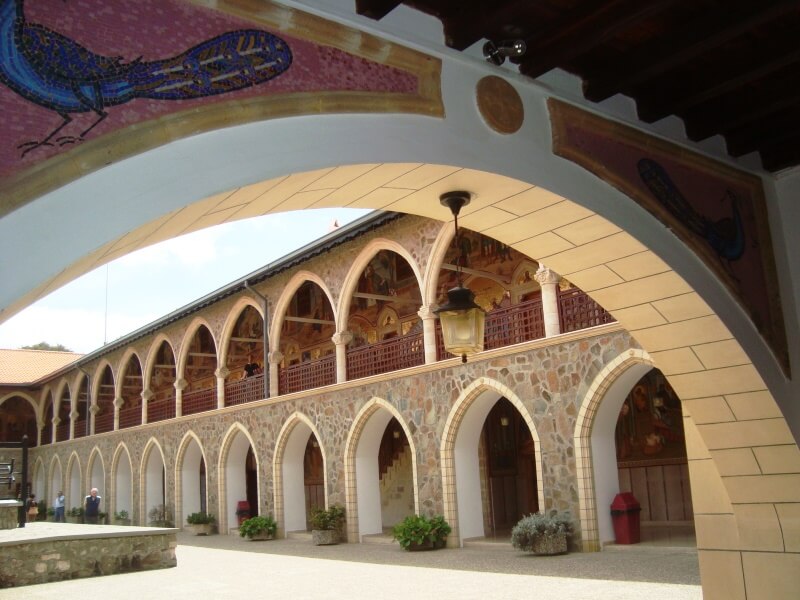
Back in Paphos you can relax a little on the pier and while the sun gives us its last rays, thoughts already fly to tomorrow!
In fact, tomorrow the hardest part of our journey awaits us: the transfer Paphos - Kyrenia with pit stop in Nicosia. We are quite worried… The lady of the CTO makes us understand that it will be very problematic to reach Kyrenia since the Cypriots have neither contacts nor information on the Turkish side.
We have to take a bus that connects us to the bus station from the sea, then another to Nicosia. And the check point? Will we easily find a ride to Kyrenia from there?
The alarm at 6.15 is a blow!
The comic fact is that when we manage to close the backpacks and put everything right, we notice that the reception is empty and the main entrance is locked ...
We are prisoners of our hotel!
We turn around to look for someone in vain, we decide to climb over a wall and sneak through a window into a small courtyard ... Fortunately Stefy manages to find an open way out: we are out but we have lost too much time, now we have to run to the bus stop .
The rest of the events are a whole series of connections and coincidences that fit together with Swiss precision and against all our best expectations, here we are in the late morning in the Cypriot capital!
Nicosia would be worth seeing if only for the history that this city tells. Nicosia is the only capital divided in two. The "green line" in fact separates the southern part, the capital of the Republic of Cyprus, and the northern part, the capital of the self-proclaimed (since 1974) Turkish Republic of Cyprus, the result of the Turkish invasion and not recognized by the international community.
Nicosia is a lively city, where young people (especially students) gather at night to have a beer outdoors in the streets of the center.
There are really many things to see. Starting with the Venetian walls which, although they failed to prevent the Ottoman advance in 1571, remained standing and still constitute the most evident tourist part of the capital. The Laika Geitonia neighborhood, within the walls, offers several interesting ideas both from an architectural point of view and as regards social life, given the high concentration of bars, cafes, restaurants and boutiques.
The same Green Line that marks the border between the north and south of the island has become a tourist attraction. In fact, since 2003, the checkpoints have been open 24 hours a day, while the two pedestrian crossings of Ledra Street and Ledra Palace Hotel have been open since 2008.
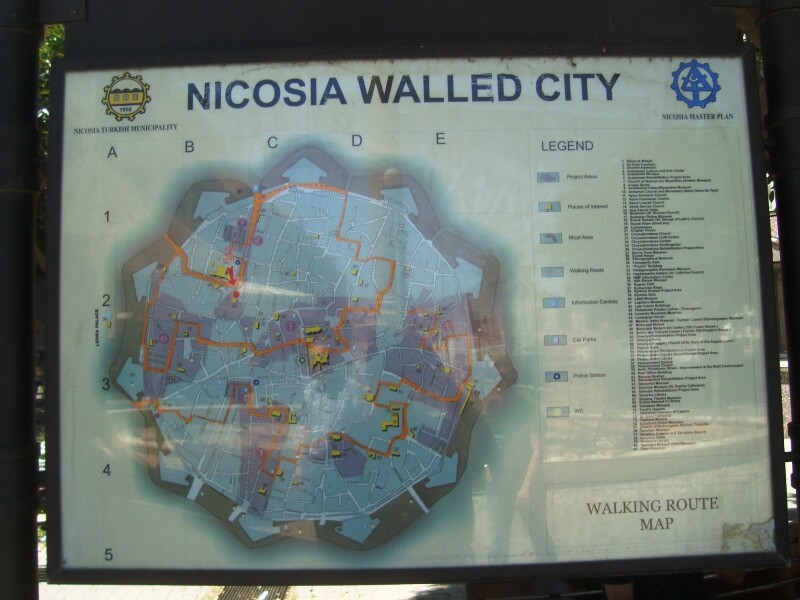
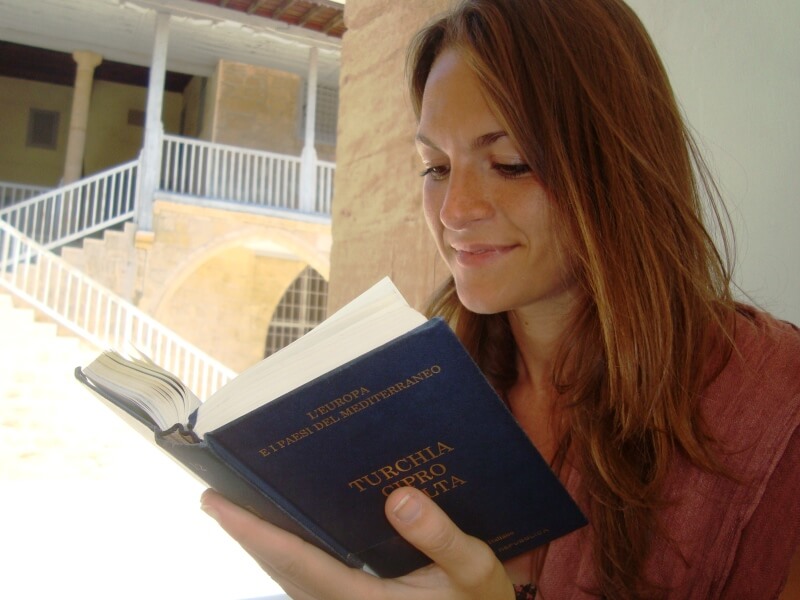
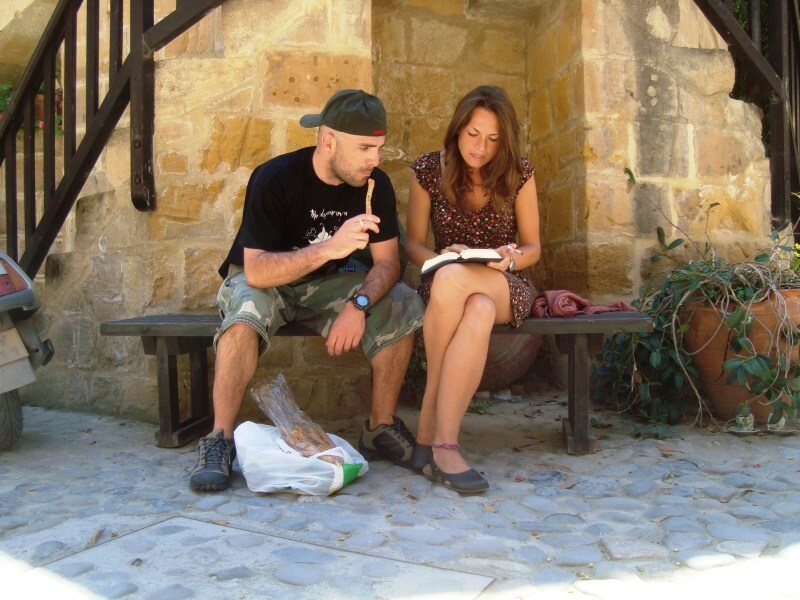



Also worth seeing is the Cyprus Museum, a few minutes' walk from the central Elefherias Square.
Inside, in fact, there is an important collection of statues and votive figures, including the famous Aphrodite of Soli, whose icon is often used on tourist posters promoting Cyprus. Of course it's not over, because in addition to the museums there are churches, mosques and countless other views. There are also hammams. Among the many, the recently completely renovated Hammam Omereye is worth a visit.
We are ready to cross the Green Line, we leave the Hellenic world to dive into the Ottoman one… and we are on the same island!
A few steps, a stamp on a pass to be kept in the passport and we enter the Turkish Republic of Northern Cyprus... but this is already another story!
Error: No feed found.
Please go to the Instagram Feed settings page to create a feed.
2 Responses
Thanks so Much . I will arrive tomorrow much more confident thanks to tour informations.
Thank you so much… we are glad we have been helpful… you will love it! Cyprus is amazing!!!!
Really hope to see you soon in Wallis and Futuna my dear friend